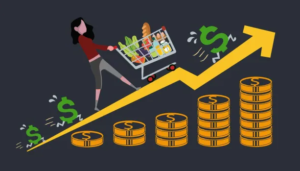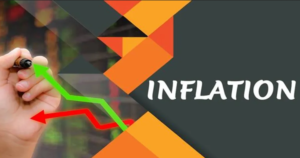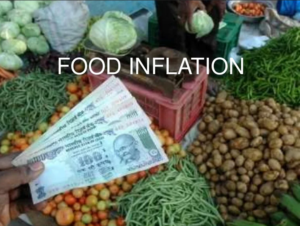
Though the worst of the Covid pandemic is likely behind us, the devastating, global economical impacts continue to be felt in 2022. At its most basic definition, food inflation refers to the costs of specific food items increasing from a prior time benchmark – this could be year over year or longer. The food inflation rate is an essential component of the Consumer Price Index (CPI), which measures the average change in prices over time paid by consumers in a fixed market. The effects of food inflation vary, from being a slight inconvenience to becoming a core component that dramatically drives food insecurity, even systemic hunger.
It’s essential to understand the causes and effects of food inflation, the 2022 food inflation forecast, and how companies like Marvell Foods can help both food-related companies AND consumers understand, manage, and more effectively operate in this new economic landscape.
Causes And Effects Of The Food Inflation Rate
There are various causes for food inflation in the United States and globally. However, food inflation started before the pandemic. Indeed, the COVID-19 pandemic has been instrumental in rising food costs – by disrupting every facet of American life and businesses, such as the labor force and the dramatic disruption to the food supply chain across the entire spectrum.
In 2018, an African swine fever wiped out many of China’s hogs. China is home to more than 50% of the world’s commercial hog population, so losing most of these animals created a ripple effect across the globe, causing prices for pork to skyrocket. This fact, coupled with the United States’ imposition of import tariffs on U.S. pork and soybeans, was the first step in the underlying food inflation crisis we now see.
Back to the Pandemic in the United States

The “food service” business model has been embedded in our society, essentially forever. Early lockdowns disrupted supply chains significantly. Instead of food deliveries to restaurants to meet the demand for consumers dining out – which effectively went away and remained a painful vacuum in the lifestyle of tens of millions of Americans for more than a year (and to some degree remains the case to some extent) – manufacturers, suppliers, and distributors had to pivot from “food service” to retail, e.g., grocery stores, supermarkets, etc. This was not an easy business paradigm shift. All the companies producing food for hotels, conventions, live theaters, movie theaters, cruise ships, casinos, and other large-scale venues serving food, came to an abrupt halt. With Americans, for all practical purposes no longer dining out, eating at home was the only option. In response to these supply chain disruptions, mass panic caused consumer hoarding of products that contributed to food inflation.
Lack of Drivers, Increase in Fuel, Greater “At Home Consumption” Contribute to Food Inflation
What further complicates the matter is that these supply chains, fragile as they are operating in this new covid reality, had difficulty keeping up with the demand. Not only is there a lack of transportation drivers, but there is also an increase in gasoline prices. When food becomes more expensive to transport, that also means higher food prices. For example, raw wholesale chicken wings that were 17 cents a pound were selling for more than 300%. That new cost must be passed along to every manufacturer/supplier who touches it before it even hits supermarket shelves. It can be frustrating and even devastating having to pay extra for essentials like bread, meat, milk, and eggs, especially if a family is on a tight budget.
Global food producers are now charging more for their products, affecting the United States. Since April 2020, there has been an increase of more than 47% of international food prices; factors include:
- Increased demand of food consumption by people (more people at home, and more people eating more frequently)
- Increased demand of feed consumption by animals
- 2020-2021 La Nina caused dry weather in key countries that export food (including the U.S.)
- The demand increase of biofuels and export restrictions
Another significant effect of food inflation is the depreciation of U.S. currency. Most countries conduct food trade with the U.S. dollar, so if a country has a weak currency, they can’t afford a higher bill to import food.
Food Inflation Forecast In 2022

Considering all of the factors noted above, the food inflation forecast for 2022 and 2023 looks like the food inflation rate will continue to rise. A recent KPMG study documented consumers facing a 22% increase in grocery bills and inflation, hitting a 31-year high in Q4 of 2021, led by double-digit jumps in meat, poultry, and fish prices. Beef, pork, and poultry pricing make up a quarter of the food price increases.
In 2022, inflation is forecast to rise another 2% to 3% percent for all food. The average increased 3.6% from 2020 to 2021 alone. In 2021, food away from home saw a higher jump, with a 4% to 5% forecast increase. In 2022, food away from home is forecast to increase by another 3% to 4%.
Experts say the effects vary by country. Some markets may experience even higher increases, especially countries that rely heavily on international imports. For countries that have spent decades fighting hunger, food inflation will continue to chip away at the progress made.
How Marvell Foods Can Help

Marvell Foods is a food broker, food trader, and wholesaler specializing in buying and selling surplus and secondary food products. Suppose your company has discontinued, out-of-date, unsold, or overstocked products. Chances are these products are taking up valuable shelf space or perhaps sitting in an expensive cold storage warehouse. Marvell Foods works with food manufacturers, suppliers, processors, co-packers, and distributors, among others, using its network of contacts developed over more than thirty years in the food business. We work with our customers across the country to provide secondary and alternative outlets for businesses and consumers to purchase food at lower prices.
Given Marvell Foods’ unparalleled network of contacts for manufacturers, producers, processors of protein products looking to keep their food costs low, Marvell Foods is an excellent source for low-cost raw commodity products. Alternatively, for companies who find themselves stuck with excess food inventory, rising storage costs, and foods approaching a “best use by date,” Marvell Foods has buyers for a wide range of fresh, frozen, and even shelf-stable products. For products out of date/code, Marvell Foods not only does import and export, but we also work with many pet manufacturers, supplying ingredients.

